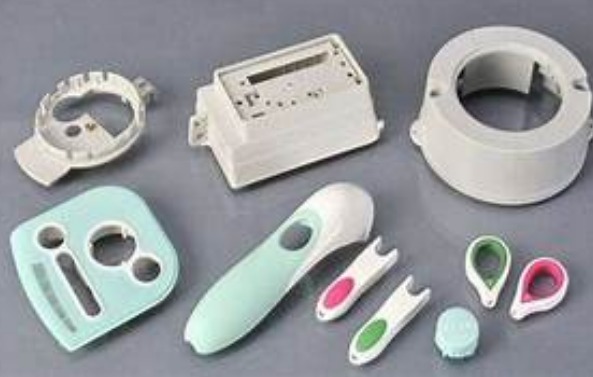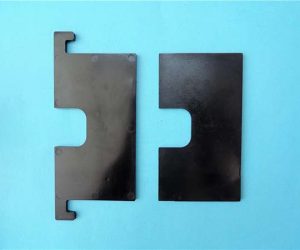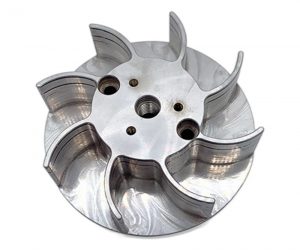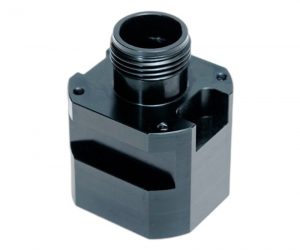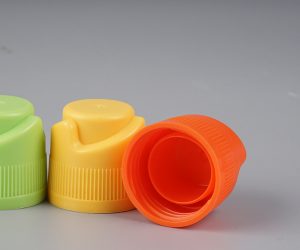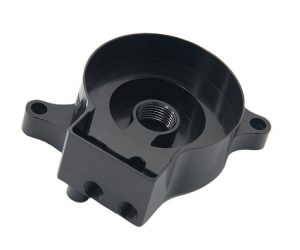Plastic injection molding, far from being a simple process, represents a complex interplay of material science, thermodynamics, and manufacturing engineering, often defying intuitive expectations. This exploration delves beyond the superficial, venturing into the unpredictable nuances that distinguish successful injection molding from catastrophic failure.
The foundational principle, the injection of molten polymer into a precisely engineered cavity, belies the intricate dance of shear forces, viscoelastic behavior, and non-Newtonian fluid dynamics at play. The seemingly straightforward cooling phase introduces further complexity: non-uniform heat transfer, residual stresses, and the potential for warpage, sink marks, and internal voids—all subtle yet potentially devastating defects. The mold itself, far from a passive recipient, actively participates in the process, its geometry dictating flow patterns, influencing thermal gradients, and ultimately shaping the final part's properties.
The advantages, while significant, are not without their caveats. High-precision manufacturing, while achievable, demands meticulous control over a vast parameter space. Production efficiency, while potentially high, is contingent upon minimizing downtime due to mold maintenance, material degradation, and the ever-present risk of process instability. The purported versatility of material mixing, while true, introduces challenges in interfacial adhesion, phase separation, and the optimization of complex rheological profiles.
Applications extend far beyond the mundane. Consider the intricate geometries of microfluidic devices, the demanding performance requirements of aerospace components, or the biocompatibility constraints of medical implants—all demanding a deep understanding of the process's limitations and the subtle ways in which they can be manipulated.
Challenges abound, extending beyond the obvious. Mold design and fabrication, while expensive, are only the beginning. Predicting and mitigating process-induced defects requires sophisticated simulation techniques, often involving computationally intensive finite element analysis and advanced rheological modeling. Furthermore, the environmental impact, encompassing material selection, energy consumption, and waste management, demands a holistic approach, moving beyond simple recycling considerations.
Designing for injection molding transcends simple geometry. It requires a profound understanding of polymer behavior, including its thermal and mechanical properties across a wide range of temperatures and shear rates. Material selection becomes a complex optimization problem, balancing cost, performance, and recyclability. Process parameter optimization demands a deep understanding of statistical process control and the ability to navigate the often-unpredictable interactions between various process variables.
In conclusion, plastic injection molding is not merely a manufacturing process; it is a complex system exhibiting non-linear behavior and demanding a multidisciplinary approach. Mastering this technology requires not only a theoretical understanding but also a deep intuition for the subtle interplay of forces and the ability to navigate the inherent uncertainties of the process. Only then can one truly harness its potential for innovation and high-performance manufacturing.
The seemingly mundane process of plastic injection molding belies a complex interplay of thermodynamic forces, material science, and precision engineering, pushing the boundaries of manufacturing precision and efficiency. This isn't merely the shaping of plastic; it's a controlled explosion of molten polymer, a dance between pressure, temperature, and time, culminating in the precise replication of intricate designs.
The process transcends the simplistic narrative of pellets melting and solidifying. Consider the chaotic ballet within the injection barrel: viscous polymers, subjected to shear forces of immense magnitude, undergo a transformation from a seemingly disordered state to a highly ordered, albeit transient, molten phase. This phase, far from homogeneous, exhibits complex rheological properties, its behavior dictated by molecular weight distribution, additive packages, and the subtle nuances of the heating profile. Injection, then, is not a gentle introduction; it's a forceful intrusion, a high-pressure assault that overcomes the mold's resistance, filling every microscopic crevice with a precision that defies intuition.
The mold itself is a microcosm of engineering artistry, a testament to the power of computational fluid dynamics and finite element analysis. Its design is not merely about shape; it's about controlling the flow of molten polymer, mitigating warpage, and ensuring consistent cooling, all while anticipating the myriad potential points of failure. The seemingly simple act of part ejection involves complex considerations of mold release agents, ejection pin design, and the delicate balance between holding pressure and preventing damage.
The advantages extend beyond mere efficiency. The ability to create parts with undercuts, complex internal geometries, and intricate surface textures opens doors to design freedoms previously unimaginable. This allows for the creation of products that push the boundaries of functionality and aesthetics, blurring the lines between what is possible and what was once deemed impossible.
However, the process is not without its inherent unpredictability. The slightest variation in material properties, mold temperature, or injection pressure can lead to catastrophic failure – warping, short shots, sink marks, and a host of other defects that can render an entire batch unusable. This necessitates a deep understanding of statistical process control, a relentless pursuit of perfection, and a willingness to embrace the inherent stochasticity of the process.
The applications are as diverse as the materials themselves. From the intricate components of medical devices demanding biocompatibility and sterility to the high-performance parts of automotive engines requiring exceptional strength and durability, injection molding underpins countless industries. Each application demands a bespoke solution, a tailored approach that considers not only the desired form and function but also the critical constraints imposed by regulatory bodies and market demands.
In conclusion, plastic injection molding is far more than a manufacturing process; it's a complex system, a delicate balance of art and science, where the slightest deviation can lead to either spectacular success or utter failure. Mastering this process requires not only technical expertise but also a deep understanding of the underlying physics, chemistry, and engineering principles that govern this seemingly simple act of transforming plastic pellets into complex, functional parts. It is a testament to human ingenuity, a relentless pursuit of precision in the face of inherent chaos.
What is plastic injection molding?
Plastic injection molding is a manufacturing technique used to mass-produce identical plastic parts with close tolerances. During the injection molding process, polymer pellets are first melted and then injected under pressure into a mold, where the liquid plastic cools and solidifies. The mold is usually made of metal and has a cavity that matches the shape and size of the desired part. The mold can also have multiple cavities to produce multiple parts at a time. The mold is then opened and the part is ejected, either manually or automatically.
How does plastic injection molding work?
Plastic injection molding consists of four main stages: clamping, injection, cooling, and ejection.
Clamping
The clamping stage involves closing and securing the two halves of the mold, called the mold base and the mold core. The mold base is attached to a fixed platen on the injection molding machine, while the mold core is attached to a movable platen. The clamping force is applied by a hydraulic cylinder or a toggle mechanism to keep the mold closed during the injection and cooling stages.
Injection
The injection stage involves feeding the polymer granules from a hopper into a heated barrel, where a reciprocating screw mixes and melts the material. The screw then pushes the molten plastic through a nozzle into the mold cavity under high pressure and speed. The amount of material injected into the mold is called the shot size, which can be controlled by adjusting the screw position, speed, and pressure.
Cooling
The cooling stage involves allowing the molten plastic inside the mold cavity to cool down and solidify. The cooling time depends on several factors, such as the material properties, the mold temperature, the wall thickness, and the part geometry. During this stage, the plastic shrinks as it cools, which can cause defects such as warping or sink marks if not properly controlled.
Ejection
The ejection stage involves opening the mold and removing the part from the mold cavity. The part can be ejected by using ejector pins, air blasts, or other mechanisms that push or pull the part out of the mold. The ejection force should be sufficient to overcome the friction between the part and the mold, but not too high to damage or deform the part.
What are the benefits of plastic injection molding?
Plastic injection molding offers several advantages over other manufacturing methods for producing plastic parts, such as:
- High production rate: Plastic injection molding can produce thousands of parts per hour with short cycle times and high repeatability.
- Low cost per unit: Plastic injection molding can reduce material waste and labor costs by using molds with multiple cavities and automated processes.
- High quality: Plastic injection molding can produce parts with complex shapes, fine details, and good surface finish with minimal post-processing.
- Design flexibility: Plastic injection molding can accommodate various materials, colors, finishes, and features by changing the mold design or using inserts or additives.
- Material compatibility: Plastic injection molding can process a wide range of thermoplastic and thermoset materials with different properties and characteristics.
What are the limitations of plastic injection molding?
Plastic injection molding also has some drawbacks that need to be considered before choosing this technology for producing plastic parts, such as:
- High initial cost: Plastic injection molding requires a high investment in designing and manufacturing molds, which can be expensive and time-consuming.
- Limited part size: Plastic injection molding has a limited part size due to the capacity of the machine and the mold.
- Part design restrictions: Plastic injection molding imposes some constraints on part design, such as uniform wall thickness, draft angles, undercuts, ribs, bosses, etc.
- Environmental impact: Plastic injection molding can generate waste materials and emissions that need to be properly disposed of or recycled.
What are some common applications of plastic injection molding?
Plastic injection molding is used for producing various plastic parts for different industries and applications, such as:
- Automotive: Plastic injection molding is used for making parts such as bumpers, dashboards, door handles, lighting components, etc.
- Medical: Plastic injection molding is used for making parts such as syringes, catheters, implants, surgical instruments, etc.
- Consumer electronics: Plastic injection molding is used for making parts such as housings, keyboards, buttons, connectors, etc.
- Packaging: Plastic injection molding is used for making parts such as bottles, caps, containers, trays, etc.
- Toys: Plastic injection molding is used for making parts such as action figures, dolls, puzzles, etc.
How to design parts for plastic injection molding?
Designing parts for plastic injection molding requires considering several factors that affect the manufacturability, quality, and performance of the parts, such as:
- Material selection: The material selection should be based on the desired properties and characteristics of the part, such as strength, stiffness, toughness, heat resistance, chemical resistance, etc. The material should also be compatible with the injection molding process and the mold design.
- Mold design: The mold design should be optimized to ensure the proper filling, cooling, and ejection of the part. The mold design should also minimize the occurrence of defects and reduce the maintenance and repair costs. The mold design should include features such as gates, runners, vents, cooling channels, ejector pins, etc.
- Part geometry: The part geometry should be designed to facilitate the injection molding process and avoid defects. The part geometry should follow some guidelines, such as:
- Use uniform wall thickness to ensure even cooling and reduce warping and sink marks.
- Use draft angles to facilitate ejection and reduce friction and wear.
- Avoid undercuts that require complex or costly mold mechanisms or manual operations.
- Use ribs and bosses to increase strength and stiffness without increasing wall thickness.
- Use rounded corners and fillets to reduce stress concentration and cracking.
- Part aesthetics: The part aesthetics should be designed to meet the functional and visual requirements of the part. The part aesthetics can be enhanced by using different materials, colors, finishes, and features. Some examples are:
- Use textured or polished surfaces to improve appearance and hide defects.
- Use inserts or additives to add functionality or decoration to the part.
- Use multi-component or overmolding techniques to combine different materials or colors in one part.
